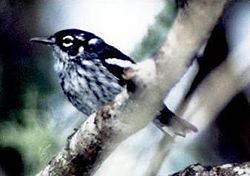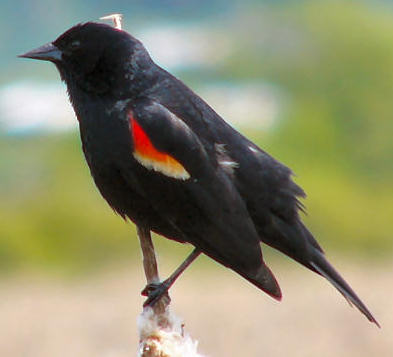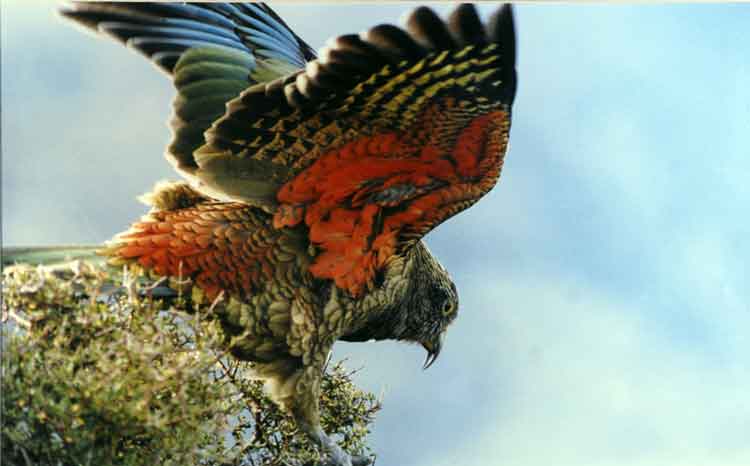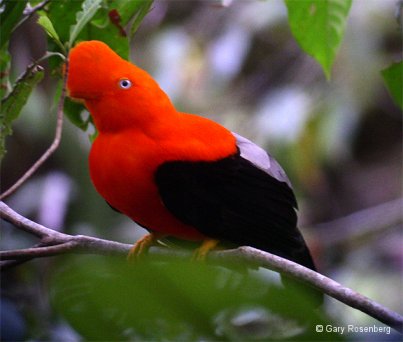Elfin-woods Warbler
The Elfin-woods Warbler, also known as Reinita de Bosque Enano (in Spanish) is a bird that is endemic to Puerto Rico. It is a local but uncommon species. It was first discovered in 1968 and described in 1972 by Cameron and Angela Kepler, and Parkes.
This bird is predominantly black and white in color. Its underparts are white with black streaks. Other distinguishable characteristics include dark brown eyes, white patches on its neck and ears, a white eye strip, and two white dots on its outer tail feathers. The Elfin-woods Warbler also has a long bill, with short round wings that are about 53.8 millimeters on average. Juveniles look slightly different to adults, as it has a gray-green back for half the year which partially moults during July to October. It has a length of 12.5 cm and weighs about 8.4 grams.
The Elfin-woods Warbler is an insectivore. This means that it mostly eats insects, and it find these insects while foraging in the middle forest canopy. While they are searching for food, it flocks with other birds such as the Puerto Rican Tanagers, Black and white Warblers, as well as the Lesser Antillean Pewees. It has been seen to catch prey using maneuvers such as sally-hover and probing, as well as gleaning.
The Elfin-woods Warbler’s songs and call are difficult to differentiate from the Bananaquit, which is the most abundant bird found in Puerto Rico. This is because the Elfin-woods Warbler has a subtle voice and a similar call to the Bananaquit. It song is a short, rapidly uttered and unmusical notes that are only one pitch, similar to a single, short, metallic chip.
This bird breeds form March to June. Both parents are involved in constructing the nest and feeding its chicks. Nests are built close to tree trunks that are within an area of dry aerial leaf litter. They are well-concealed and are about 1.3 to 7.6 metres above ground level. The nests are cup-shaped, and are constructed out of twigs, small roots, and dry leafs from the Chusquea abietifolia, B. wadsworthii, and Panicum maximum leaves. The interior of the nest are made out of fibers from the Chusquea abietifolia, dry leaves, and other plant matter. When the female Elfin-woods Warbler lays its eggs, it will lay only 2 to 3 eggs which are white in color with red-brown spots.
This bird has two main threats – destruction or alteration of its habitat, as well as predation. Its predators are the Pearly-eyed Thrasher, White-neck Crow, and Sharp-shinned Hawk. It may also include snakes, cats, dogs, black rats, and small Asian Mongooses. As a result, this bird is categorized as being vulnerable.



